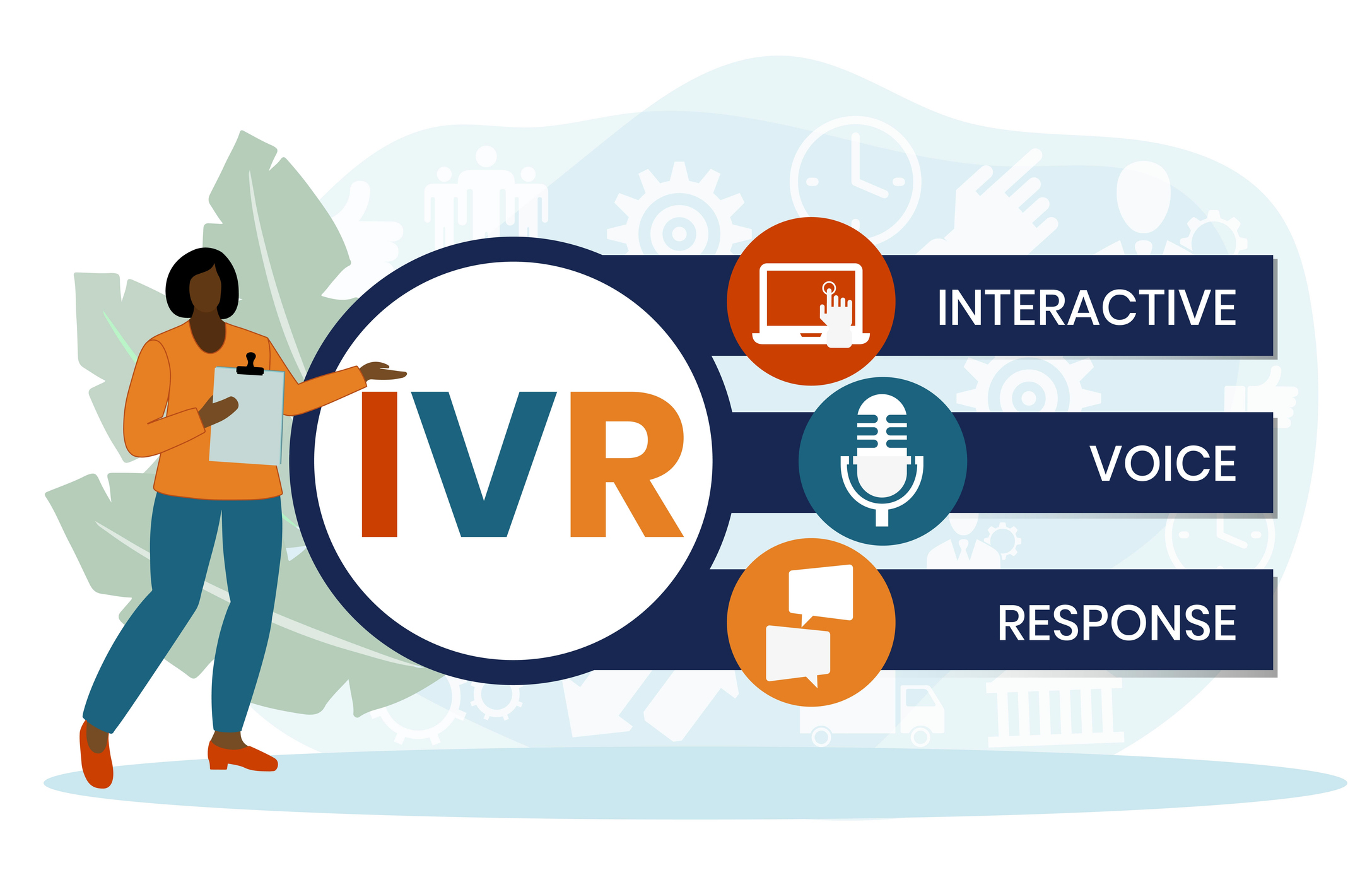The Guide to IVR Testing: Ensuring Seamless Customer Experiences
by Nicole Robinson | Published On January 22, 2025

IVR (Interactive Voice Response) systems are a common component of most contact centers. When these systems function effectively, they help to enhance customer experiences, enabling streamlined self-service, and ensuring callers reach the right agent or department.
Unfortunately, a single problem with an IVR system can also derail customer journeys, causing frustration, inefficiency, and ultimately sending buyers into the arms of your competitors. In fact, PWC found that one in three customers would abandon a brand they loved after just one bad experience. IVR testing is how contact center leaders ensure poor prompts, glitchy menus, and other IVR issues aren’t driving customers away from their organization.
In this guide, we’ll explore the benefits of IVR testing, the different types of tests you should consider using, and some of the top tips you can use to ensure you’re getting the most out of your IVR system.
What is IVR Testing?
IVR testing is the process of strategically evaluating the functionality and performance of Interactive Voice Response systems. By conducting a series of different tests, contact center leaders can ensure their systems are constantly functioning accurately, efficiently, and reliably.
Ultimately, IVR testing doesn’t just help companies to check whether their technology is working as it should be – responding to queries, routing customers to the right agent, and so on. It also helps companies pinpoint any frustrating hurdles the customer might be facing when navigating the IVR menu and interacting with your technology.
Beyond that, IVR testing helps to ensure your entire call center is functioning properly. After all, misrouted calls, unintuitive menus and system crashes don’t just harm customer experiences. They can also lead to lost productivity among team members and disrupted workflows.
Testing also helps organizations optimize system performance and prepare for spikes in call volumes. This ensures every interaction feels seamless and professional—whether customers are calling to check their balance, book a flight, or troubleshoot an issue.
Why is IVR Testing Critical for Contact Centers?
First impressions matter, particularly in today’s world, where customers have higher expectations and more competitors to choose from than ever before. For most businesses, the IVR system represents the first touchpoint customers have with their organization. It can set the tone for every experience customers have with your contact center and directly influence your brand’s reputation.
IVR testing helps to ensure your system is intuitive, responsive, and error-free. With the right strategy, you can:
Improve Customer Satisfaction
When an IVR system fails—whether it’s due to incorrect prompts, dead-end menus, or misinterpreted voice inputs—customers notice. Errors like these can lead to frustration and churn. In fact, 67% of customers list poor customer service as their top reason for switching to another business.
Testing your IVR system regularly ensures you can identify problems quickly and fix them before they have a lasting impact on your customers. It helps to boost customer retention efforts and protect your brand’s reputation.
Reduce Waiting Times and Transfers
Long wait times lead to unhappy customers and missed opportunities for companies. If your IVR system isn’t responding effectively to customer queries, or routes a customer to the wrong department, wait times will naturally increase.
Testing helps fine-tune the call routing logic, ensuring that customers are quickly and accurately connected to the right department. Additionally, load testing ensures the system performs well under peak demand, reducing wait times and preventing call drops.
Enhance Contact Center Efficiency
As mentioned above, an IVR system that performs well doesn’t just benefit customers. It can also boost operational efficiency. If an IVR system can perform repetitive tasks effectively, like handling transactions or account inquiries, this reduces the amount of work agents need to do manually.
Agents end up with more time to focus on other, more complex issues, and the speed and quality of your customer service improves. When an IVR system supports your agents, rather than giving them additional issues to deal with (like routing customers to the incorrect department), team satisfaction and productivity also improve.
Ensure System Reliability
Call drops, system crashes, and performance lags can cripple a contact center during critical moments. IVR testing simulates real-world usage scenarios, allowing businesses to identify issues and optimize system performance before problems arise. This proactive approach ensures high service availability and reliability, keeping customers satisfied and loyal.
It can also ensure you’re getting the most value out of your IVR technology, improving the overall return on investment (ROI) your system delivers.
Types of IVR Testing Strategies: Options to Consider
There are numerous ways to test an IVR system, depending on the type of technology you’re using, and the issues you’re trying to identify. Most contact centers will use a range of different tests to get a holistic view of everything from system efficiency to user experience.
Some of the most common IVR testing strategies to use include:
Functional IVR Testing
Functional testing is all about making sure your IVR system works exactly as it should. In other words, it helps companies to determine whether every feature, from call routing capabilities, to menu trees, operates exactly as it’s supposed to.
The features you’ll examine when performing a functional test depend on what your IVR technology can do. For instance, you might look at whether menu options lead callers to the correct department or agent without issues. You may also look at things like:
- Data Collection: Verify that customer information, payments, and feedback are captured without errors.
- Integrations: Confirm smooth and secure interactions with third-party systems like CRMs or payment gateways.
- Accessibility: Ensure compliance with accessibility standards, allowing users with disabilities to navigate via assistive technologies.
You may even look at how your IVR system handles complications, like invalid inputs or unexpected requests, by giving customers helpful prompts.
Load Testing or Stress Testing
Load testing and stress testing are two similar strategies for examining the performance of IVR systems. They involve exposing the system to heavy levels of call traffic, to ensure that it can still operate as intended during times of increased demand.
Load and stress testing typically flood your system with simulated calls, allowing you to see whether technical issues arise when the system is overwhelmed. You can look for things like:
- System Stability: Can the IVR handle a surge of simultaneous calls without crashing?
- Resource Utilization: Are servers and networks optimized for peak traffic, or do bottlenecks occur?
- Scalability: Can the system handle future growth without requiring significant upgrades?
Typically, load and stress testing strategies involve using sophisticated tools and high-capacity testing environments. These tools also enable companies to monitor the changes that might occur in a system under strenuous conditions in real time.
Speech Recognition Testing
IVR systems have evolved significantly over the years, thanks to the rise of artificial intelligence. With intelligent IVR systems, customers don’t have to press buttons on a keypad to be routed to the right agent or department. Instead, they can simply speak their questions or concerns to the system.
However, even sophisticated IVR technologies can struggle at times. Some tools may be unable to interpret commands from someone with a specific accent, others might have a hard time understanding speech input when a customer has a bad signal or is calling from a noisy environment.
With speech recognition testing, companies can get a deeper insight into whether voice commands can be processed by their technology effectively, in a range of scenarios. These tests can even help business leaders to determine how to further train and fine-tune their AI technologies. For instance, if the system struggles with specific accents, companies can use call recordings and additional voice data to help improve system performance.
Regression Testing
Most organizations need to regularly update their IVR technologies with new features, menu options, and routing strategies. Unfortunately, even a minor change can sometimes disrupt and damage the performance of existing features. Regression testing helps to ensure that new updates don’t harm the functionality of critical features or integrations.
With regression testing, teams check everything in their IVR system still works as it should after each update. They check that integrations are still working smoothly, and customer-facing features, like prompts and menus, are consistent and intuitive.
Automated regression testing tools are helpful for streamlining this process, allowing businesses to quickly identify and address any issues that updates might create.
User Experience Testing
User experience testing focuses on the human side of IVR functionality. Basically, employees or experts step into the shoes of a potential customer, and use the IVR system as they would, looking for any issues with menus, navigation, or performance.
During a user experience test, you’ll make sure the menus of your IVR system are easy to navigate and logical – ensuring customers can reach the right department or agent without confusion. You’ll look at whether prompts and instructions are clear and concise, and whether the system can accurately process user inputs.
Additionally, you’ll ask yourself whether the overall IVR experience leaves a positive impression on a potential customer. With user experience testing, some companies may even use A/B tests to see whether slight changes to menus or prompts would improve or harm the customer experience.
In some cases, they may also combine the results of tests with genuine feedback from customers, for deeper insights into potential friction points in the IVR journey.
Best Practices for Effective IVR Testing
IVR testing isn’t just about running scripts and ticking checkboxes. It’s about making sure you’re delivering a seamless experience to your customers. To make sure you’re getting the best results from your testing strategy, here are some top tips to follow:
Use Comprehensive Tests, Aligned with Customer Journeys
First, since a lot of things can go wrong with an IVR system, and potentially cause issues with customer experiences, your tests need to be comprehensive. It’s not enough to simply check whether menus work properly. You’ll need to consider the actual paths real customers might take when they’re navigating your system and connecting with your company.
Map out a variety of customer journeys, looking at things like what might happen if a customer calls your company with a technical issue, a request, or to complete a specific task, like making a payment. Think about potential issues each customer might face throughout these journeys, such as problems entering payment details into a phone or understanding IVR prompts.
Aligning test cases with customer journeys ensures you catch potential pain points that could frustrate users. For example, if your IVR is designed for a healthcare provider, the test cases should mimic tasks like scheduling an appointment or accessing test results.
Simulate Actual Customer Interactions
To truly understand how your IVR performs, testing should go beyond theoretical models. Simulate real-world interactions by incorporating diverse scenarios, including:
- Different accents, speech patterns, and languages for voice recognition systems.
- Varying levels of background noise to evaluate system accuracy.
- A mix of callers, from tech-savvy users to those less familiar with automated systems.
You could get insights into the kinds of customer interactions you might need to simulate by reviewing call recordings, or assessing customer feedback and reviews. Remember to test new potential scenarios and customer interactions regularly.
Test During Peak Call Times
Just because your IVR system works perfectly on a typical day, doesn’t mean it will continue to perform well when it’s placed under strain. During peak calling periods, such as when your company launches a new product or hosts a seasonal sale, your IVR system faces a lot more pressure.
This additional pressure can cause technical difficulties and errors that harm the customer experience and have a negative impact on your team’s performance. Regular load and stress testing can help to ensure that you’re aware of any issues your system might face when calls increase.
When stress or load testing your system, pay attention to metrics like system responsiveness, call handling times, and the rate of dropped or misrouted calls. Consider implementing strategies that will support the system during peak call times – such as new routing methods.
Constantly Update, Optimize, and Improve Your IVR System
An IVR system isn’t a “set it and forget it” solution. If you want to ensure your system is working perfectly, and delighting your customers, you’ll need to commit to constant optimization. Don’t just test your system regularly, using the strategies outlined above.
Gather feedback from users directly with surveys, or review requests. Find out if certain menus are becoming too confusing or overly complex, or whether your customers are frequently requesting human assistance because they can’t navigate the IVR system correctly.
Regularly update your system based on this feedback and insights, creating new routing strategies, menu scripts, and even experimenting with advanced technology like AI for natural language interactions.
Optimize Your IVR System’s Performance
IVR testing is a cornerstone of delivering exceptional customer experiences and maintaining operational efficiency. By ensuring that every aspect of your system works seamlessly, you can improve customer satisfaction, enhance your brand’s reputation, and minimize costly errors.
At ComputerTalk, we understand the critical role IVR systems play in customer satisfaction and business success. Whether you’re looking for insights into how you can improve your IVR system’s performance, or you want to upgrade your IVR technology with AI, we can help.
More from our blog
 In today’s customer service landscape, relying solely on voice support is no longer enough. While call centers have long been the backbone of customer support, nowadays, customers expect fast, seamless, and consistent support across multiple touchpoints.
In today’s customer service landscape, relying solely on voice support is no longer enough. While call centers have long been the backbone of customer support, nowadays, customers expect fast, seamless, and consistent support across multiple touchpoints.
 When it comes to contact center solutions, there are more options now than ever before.
When it comes to contact center solutions, there are more options now than ever before.
 In recent years, the introduction of artificial intelligence into IVR solutions has taken the potential of this technology to the next level.
In recent years, the introduction of artificial intelligence into IVR solutions has taken the potential of this technology to the next level.

